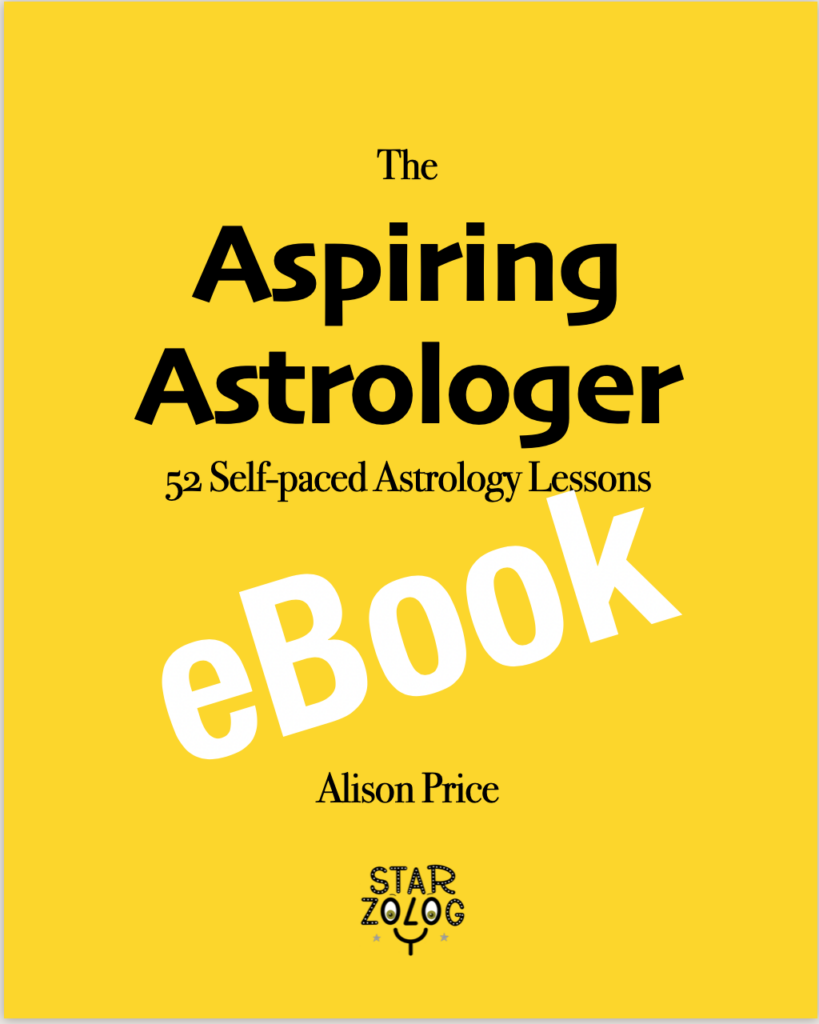The ABCs of Astrology
In this particular episode, we’re going to explore the whimsical side of astrology by examining the ABCs of this mystical discipline.
Each letter of the alphabet will feature a chosen astrological component but be aware that not all aspects will be covered.
To illustrate, the letter C could stand for Chart, Cancer, Conjunction, Chiron, or Capricorn, and there are likely numerous other astrological terms that readily come to mind.
Without further ado, let’s begin our journey with the letter A.
A is for Aspects
In astrology, aspects refer to the angular relationships between celestial bodies in a birth chart. These relationships, determined by the degrees of separation between planets, reflect specific energetic connections and influences. Aspects reveal the dynamic interplay between various planetary energies, shaping an individual’s personality traits, potentials, and life experiences. They can indicate harmonious or challenging interactions, highlighting areas of strength, challenges, and opportunities for growth. Common aspects include conjunctions (when planets are close together), squares (90-degree angles), trines (120-degree angles), and oppositions (180-degree angles). The nature of the aspect determines the nature of the interaction, influencing the overall astrological interpretation.
Read more >>> Astro Art
B is for Books
If you’re delving into astrology and seeking some insightful reading material, I have a few book recommendations for you.
Consider adding the following three titles to your astrology collection:

- “An Ephemeris” – This book provides essential astronomical data, such as the positions of celestial bodies, which is crucial for accurate astrological calculations and chart interpretations.
- “The Contemporary Astrologer’s Handbook” by Sue Tompkins, this handbook offers a comprehensive guide to modern astrology, covering various techniques, chart interpretation, and practical advice for aspiring astrologers.
- “Planets in Transit” by Robert Hand, this book explores the influence of planetary transits, revealing how the movement of planets in relation to an individual’s birth chart can shape and influence life events and personal growth.
These three books can serve as valuable resources to deepen your understanding of astrology and enhance your astrological practice.
C is for Chart
The centerpiece of any astrology session lies in the chart, a profound depiction of your life and spiritual voyage.
Your individual birth chart acts as a blueprint, unveiling the intricate details of your existence.
Numerous chart variations exist, including:
- Natal charts: It highlights the positions of celestial bodies at the time of your birth, shedding light on your personality traits, potentials, and life path.
- Composite charts: These charts combine the birth charts of two individuals to explore the dynamics and potentials of their relationship.
- Progressed charts: They reflect the evolution of your natal chart over time, offering insights into your personal growth and life transitions.
- Directed charts: These charts focus on specific periods or themes in your life, providing a more in-depth understanding of their influence and significance.
- Solar return charts: They are cast for the exact moment when the Sun returns to its natal position each year, providing insights into the upcoming year’s themes and energies.
- Bi-wheel charts: They feature two charts overlaid, allowing for a comparative analysis of different time periods or individuals.
This list merely scratches the surface, as astrology encompasses a wide array of chart types, each offering unique perspectives and insights into various aspects of life.
D is for Descendant
The descendant, located on the western horizon at the time of your birth, holds significance in your chart.
It symbolizes several facets, including your life partner and the qualities you seek in a companion.
This point highlights the characteristics, values, and attributes you desire in a significant other.
It provides insights into your ideal partner’s traits and helps shape your expectations in relationships.
The descendant plays a crucial role in understanding the dynamics of your partnerships and the type of connection you seek in your journey through life.
E is for Ephemeris
An ephemeris is a table or data set that provides the positions of celestial objects, such as planets, moons, and stars, at specific times.
It contains information on their coordinates, distances, velocities, and other relevant parameters.
Ephemerides play a crucial role in astrology, where they provide information for horoscope charts and planetary alignments.
Overall, ephemerides are vital tools for understanding and navigating the celestial realm.
F is for Fixed Stars
Although all stars are in motion, some appear stationary to us, and we refer to them as fixed stars.
The Four Royal Stars of Persia, including Fomalhaut, Antares, Aldebaran, and Regulus, are considered the primary fixed stars.
They are also known as the watchers of the four cardinal points of North, South, East, and West.
Currently, all of these magnificent stars are located in fixed signs, indicating their significant influence on human affairs.
G is for Glyphs
Glyphs in astrology are symbolic representations used to denote celestial bodies, zodiac signs, and other astrological elements.
Each glyph has a unique design that captures the essence of its corresponding entity.
These symbols serve as a concise and universal language in astrology, enabling astrologers to communicate and record information efficiently.
Glyphs are essential for constructing birth charts, where they represent planets, asteroids and other celestial points.
They are also used to represent zodiac signs, planetary aspects, and other astrological factors in charts and diagrams.
By utilizing glyphs, astrologers can convey complex astrological concepts quickly and accurately, enhancing the understanding and interpretation of astrological systems.
H is for Houses
Houses, alongside signs, form one of the fundamental pillars of astrology.
Astrologers must possess a comprehensive understanding of the significance of houses and the meaning each planet holds within them.
Mastering this knowledge requires time and dedication due to its vast scope. However, the endeavor is immensely rewarding.
For those practicing writing horoscopes, a thorough comprehension of houses becomes indispensable.
It serves as a vital tool for deciphering the intricate dynamics between celestial bodies and human lives, enriching the accuracy and depth of astrological interpretations.
I is for Immun Coeli
In astrology, the Immum Coeli (IC) is a significant point in the birth chart representing the bottommost part of the sky at the time of an individual’s birth.
It is often associated with one’s roots, family, and private life.
The IC signifies the foundation of one’s being, including their upbringing, ancestry, and emotional core.
It influences the person’s sense of security, innermost desires, and personal connection to their home and family.
Understanding the Immum Coeli helps astrologers gain insights into a person’s psychological and emotional foundations, enabling them to explore the deep-seated influences that shape an individual’s sense of belonging and personal identity.
J is for Jupiter
Jupiter stands out in my astrology ABC as the largest planet by a significant margin.
It boasts an impressive number of satellites and is renowned for its iconic Great Red Spot.
Associated with growth, luck, and all things expansive, Jupiter holds dominion over the signs of Sagittarius and traditionally rules Pisces.
These two signs are bicorporeal, symbolized by dual entities within each: Sagittarius depicts a man and a horse, while Pisces showcases two fish.
Jupiter’s influence extends to all that is grandiose and abundant, amplifying the qualities of these signs and emphasizing the multifaceted nature of their symbolism.
K is for Kepler
Johannes Kepler established three laws of planetary motion, and his second law holds particular relevance for astrologers.
This law states that a planet will cover equal areas in equal times.
Consequently, when a planet is closer to the Sun in its orbit, or at perihelion, it moves more rapidly through the zodiac signs.
In contrast, when it is farther away at aphelion, its movement through the signs is slower.
For example, Pluto’s orbit brings it close to the Sun in Scorpio and farther away in Taurus.
Therefore, it takes twenty years for Pluto to transit Scorpio, but it takes forty years to transit Taurus, underscoring the impact of Kepler’s second law on astrological calculations.
L is for Local Mean Time
Local mean time, an essential component in manual chart calculations, required determination in the past.
It differs from standard time within a specific time zone.
Local mean time refers to the time in your specific geographic location, accounting for the variations in longitude.
Prior to the convenience of standardized time zones, individuals had to calculate their local mean time based on their specific longitude.
This adjustment allowed for more accurate astrological chart calculations, taking into account the precise positioning of celestial bodies at the moment of an individual’s birth in their particular location.
M is for Midheaven
The Midheaven, a potent and influential point situated at the pinnacle of every chart, holds significant meaning.
It represents one’s highest achievements and honors, reflecting their endeavors in the public sphere and their notable contributions.
This point sheds light on an individual’s professional pursuits, public image, and the activities for which they are recognized.
It plays a crucial role in shaping one’s reputation, be it for positive acclaim or even notoriety.
The Midheaven serves as a compass, guiding astrologers to gain insights into an individual’s standing in the world and their prominent role, or not, in society.
N is for Nodes
The nodes, also known as the lunar nodes, constitute a pair of points in any chart where the path of the Moon intersects with that of the Sun.
These nodes are present in every chart and gradually regress or move retrograde through the zodiac, though they may occasionally remain direct or stationary for brief periods.
The North node implies forthcoming opportunities and one’s future destiny, while the South node signifies the relinquishment of certain aspects or circumstances and points to one’s past experiences.
By analyzing the placement and movements of these nodes, astrologers can gain insights into an individual’s karmic journey and provide guidance for their path ahead.
O is for Orbs
Orbs function as tolerances in astrology, indicating the degree range within which two celestial bodies can form an aspect.
A narrow or tight orb refers to a range of less than one degree, while a wider orb typically extends to about eight degrees for aspects like conjunctions, oppositions, trines, and squares.
The tighter the orb, the stronger and more precise the aspect is considered to be.
A wider orb allows for a more lenient interpretation, acknowledging the potential influence of the aspect even if the exact degree alignment is not as precise.
Orbs provide astrologers with flexibility in assessing the strength and significance of planetary aspects within a birth chart.
P is for Planets
The planets within a chart embody the energetic forces at play.
Their placement indicates areas of activity and significance.
As planets occupy houses, they infuse vitality and meaning into them.
Planetary positions in signs can determine their state of happiness or lack thereof, which is influenced by their essential dignity.
This reflects how well a planet aligns with the qualities and characteristics of a given sign.
Essentially, the planets serve as active participants, shaping the dynamics and expressions within a chart, with their location and essential dignity providing valuable insights into their influence and impact.
Q is for Quadrants
The four quadrants are defined by two axes: the Ascendant and Descendant, as well as the Midheaven and IC.
- The first quadrant lies below the Ascendant and represents the realm of the private self.
- The second quadrant lies below the Descendant, embodying the private interactions with others.
- The third quadrant sits above the Descendant, symbolizing the public interactions with others.
- The fourth quadrant resides above the Ascendant, denoting the public self and one’s outward presence.
R is for Retrogrades
With the exception of the Sun and Moon, all planets undergo retrograde motion.
Mercury retrogrades three times annually, Venus retrogrades five times within an eight-year period, and Mars retrogrades approximately once every two years.
The remaining planets experience retrograde motion each year.
The outer planets enter retrograde from their trine aspect to the Sun, continue through the opposition, and conclude at the subsequent trine.
When the outer planets are opposite the Sun, they are all in retrograde.
Retrograde periods add unique dynamics to planetary influences, providing astrologers with valuable insights into the complexities of planetary energies and their impact on individuals’ lives.
S is for Sun Signs
Sun signs are the gateway to astrology as everyone is familiar with their own Sun sign.
It’s usually the first thing people learn about astrology.
Even individuals who are not into astrology are aware of their Sun sign and read horoscopes related to it in the media.
Your Sun sign is determined by the position of the Sun on the day of your birth, such as being in Gemini if your birthday falls between May 21 and June 20.
The signs are categorized into polarities, elements, and modes.
T is for Transits
When beginning the study of astrology, one of the first forecasting techniques introduced is the use of transits.
In fact, many astrologers solely rely on transits for their forecasting practices.
Transits focus on the current and future positions of planets, providing insight into their movements in the upcoming weeks, months, or even years.
By observing where the planets are presently and where they will be in the future, astrologers can gain valuable information about the potential influences and developments in an individual’s life.
Transits serve as a foundational tool for forecasting, enabling astrologers to analyze the dynamic interplay between celestial bodies and their impact on an individual’s chart.
U is for Universe
For the letter U, I have chosen the term “universe.”
While not exclusively an astrology term, it encompasses the entirety of the space in which we exist.
The universe holds a broader significance, encompassing all celestial bodies, energies, and cosmic forces that influence our lives.
While astrology focuses on specific planetary and celestial influences, the concept of the universe reminds us of the vastness and interconnectedness of everything in existence.
It serves as a reminder that astrology is just a part of a much larger cosmic tapestry, inviting contemplation of our place within the grandeur of the universe.
V is for Vertex
Positioned on the right side of a chart, it commonly resides within the fifth, sixth, seventh, or eighth houses.
The Vertex acts as a gateway through which people, situations and events enter and exit our lives.
When the Sun of another person is conjoined your Vertex, it signifies that they are a profoundly influential individual for you.
This alignment suggests a person of great significance, playing a pivotal role in your life’s journey and leaving a lasting impact.
The Vertex serves as a key indicator of significant connections and transformative experiences within the realm of astrology.
W is for Wheel
The wheel serves as the foundation of a chart, visually depicting its structure.
Resembling a wheel with spokes, it delineates the distinct areas of life through the houses and axes in your chart.
The circular form of the wheel symbolizes the cyclical nature of existence and the interconnectedness of various life domains.
The houses represent specific realms of experience, while the axes highlight important dynamics and relationships within the chart.
By visualizing the chart as a wheel, you can gain a comprehensive understanding of how different facets of life intertwine and influence one another, allowing for insightful interpretations and analysis of an individual’s unique cosmic blueprint.
X is for X-Factor
The X-factor in astrology represents your individuality and the unique qualities you bring to chart interpretation.
It remains unknown until you dive into the process.
Your personal approach to understanding and connecting with clients becomes your X-factor.
When interpreting charts, I draw insights from my own birth chart, which reflects my true essence, while you utilize your birth chart and personal experiences to shape your interpretations.
In astrology, there are no rigid rules for interpretations, allowing for individual interests and inclinations to shine through.
Embrace your X-factor and unleash your potential as the best astrologer you were destined to be, utilizing your distinctive perspective to provide meaningful and authentic guidance to others.
Y is for Yod
The Yod aspect in astrology, also known as the “Finger of Fate,” is an intriguing and potent configuration.
It forms when two planets are in sextile (60°) aspect and both form an inconjunct (150°) aspect to a third planet.
The Yod creates a focal point of tension, pushing an individual towards a unique and transformative path.
It represents a karmic challenge or a special mission in one’s life, often requiring adjustment and integration of seemingly contradictory energies.
Those with a Yod aspect pattern possess exceptional potential for personal growth and spiritual evolution, as they navigate the complexities and embrace the opportunities presented by this interesting and impactful configuration.
Z is for Zodiac
The Zodiac signs derive their names from the constellations that the Sun traverses throughout the year.
Only the constellations aligned with the Sun’s path are recognized as Zodiac signs, while those like Orion, despite being well-known, do not fall within the Zodiac.
Although constellations can differ in size, each tropical sign spans a uniform length of thirty degrees.
This standardization allows for consistent division and interpretation of the zodiacal wheel.
By understanding the relationship between the Sun’s journey and the designated signs, astrologers can accurately analyze and interpret the unique characteristics and energies associated with each Zodiac sign.
Greetings Cards
Because I enjoy astro artwork as well, I have created a greeting card with the ABCs images on it and you can find the link in the description.
You can see the image on the blog post.

Author Bio
Alison Price: Astrology Coach
Alison wants to help you uncover your individual creativity and lead a fulfilling life using your own astrology. She shares her wisdom from the heart with a touch of humor.
Learn more about Alison’s journey.
If you’d like to get in touch with Alison, you can reach out to her via email at starzology@gmail.com.
More Articles
If you enjoyed this post, you may like some more astrology related articles from our blog.

Astro Journal Flip Through
See how I created my Astro Journal to help align myself with the seasons and see a flip through of my month.

Saturn in the Houses
In astrology, SATURN in the HOUSES show where you can bring some mastery and responsibility to an area of your life.

Starzology Astrology Podcast
Join us for calm astrology themed fireside chats. We have conversations around transits, ingresses, retrogrades and lunations on the Starzology Astrology Podcast.





